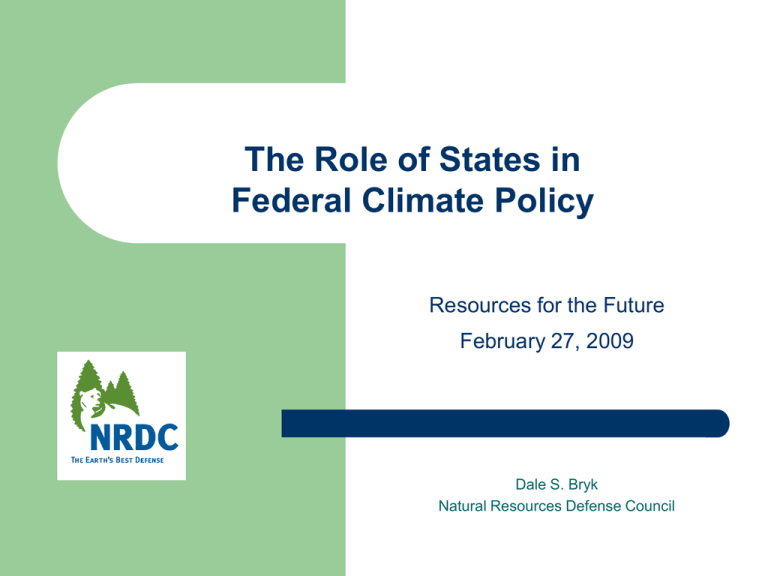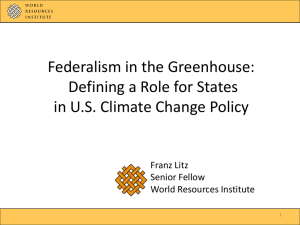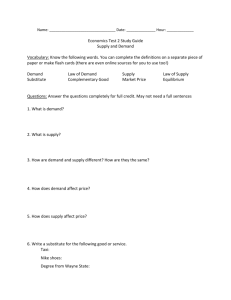The Role of States in Federal Climate Policy Resources for the Future
advertisement

The Role of States in Federal Climate Policy Resources for the Future February 27, 2009 Dale S. Bryk Natural Resources Defense Council State Role in Federal Climate Policy Drive investment in least cost solutions (efficiency, transit, renewables – JOBS) Essential complementary policies (EERS, RPS, smart growth, vehicle & LCFS) Strengthen the cap (retire federal allowances) McKinsey Assessment of 2030 U.S. carbon abatement potential Source: McKinsey Driving Investment in Least Cost Solutions Price signal of cap or tax (does not overcome market barriers; most expensive option) Allowance revenue Essential complementary policies – – – – Energy efficiency Renewable energy Vehicles, fuels and VMT Standards for new power plants/CCS State Directed Investments Energy efficiency [JOBS] – – – Electricity Natural gas Other heating fuels Design questions – – – Size of investment (~$25 billion/year) Distribution to utilities and/or states Performance metrics State Directed Investments Transportation and Smart Growth [JOBS] – – – Land use planning Transit Vehicles and fuels Design questions – – – Size of investment (~$10 billion/year) Distribution to states/localities/MPOs Performance metrics Essential Complementary Policies Energy Efficiency – – – Renewables – – Energy efficiency procurement requirements Regulatory framework (revenue decoupling) Codes and standards RPS Deployment incentives Transportation – – – Vehicle standards Low carbon fuel standards Land use planning & transit State Role in Federal Climate Policy Substantial role directing investment of allowance value TO CREATE JOBS Control over sufficient number of allowances that it is practical to retire some to strengthen cap Retain authority for broad set of climate and energy policies No pre-emption/ negotiated transition to single C&T



